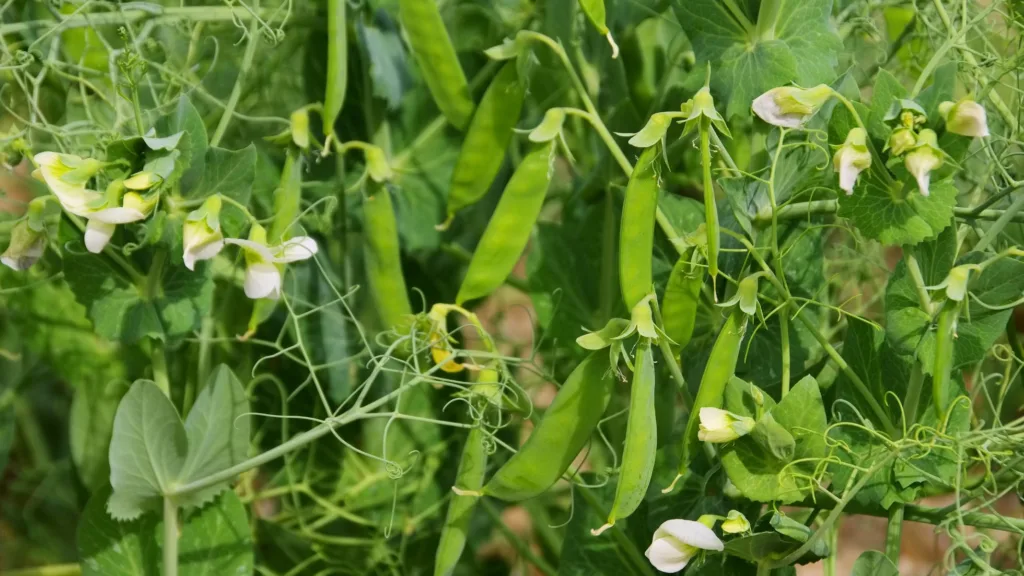Pea Family Plants
Here’s a brief overview of the pea family (Fabaceae) and some of its fascinating members:
- Acacia (genus Acacia): Acacias are known for their spiky leaves and distinctive flowers. They thrive in arid regions and play essential roles in ecosystems by fixing nitrogen in the soil.
- Alfalfa (Medicago sativa): Alfalfa is a valuable forage crop used as feed for livestock. It’s rich in nutrients and helps improve soil health due to its deep root system.
- Chickpea (Cicer arietinum): Chickpeas, also known as garbanzo beans, are popular legumes worldwide. They’re delicious, protein-rich, and used in various cuisines.
- Lentil (Lens culinaris): Lentils are staple foods in many cultures. They come in various colors (green, brown, red) and are excellent sources of protein, fiber, and essential nutrients.
- Sweet Pea (Lathyrus odoratus): Sweet peas are beloved for their fragrant flowers. They’re often grown as ornamental plants and add charm to gardens.
- Lupine (genus Lupinus): Lupines have vibrant, spiky flower clusters in shades of blue, purple, pink, or white. Some species are nitrogen-fixing, benefiting nearby plants.
- Soybean (Glycine max): Soybeans are major protein sources globally. They’re used for tofu, soy milk, and various processed foods. Soybean plants also enrich the soil with nitrogen.

pea scientific name and family
The scientific name for the garden pea is Pisum sativum, and it belongs to the Fabaceae family, also known as the legume or bean family.
Pea family characteristics
The pea family, or Fabaceae, boasts a stunning diversity with over 20,000 species. These flowering plants, recognized for their butterfly-shaped blooms, come in all shapes and sizes, from towering trees to tiny herbs. A key feature uniting them is their leaves, typically compound with leaflets in a feather-like arrangement. Their roots harbor nitrogen-fixing bacteria, enriching the soil, and their fruits are the familiar legume pods that split open to release peas, beans, lentils, and more.
Pea uses and benefits
Peas are not only delicious additions to meals but also offer several health benefits. Let’s explore their nutritional value and potential advantages:
- Types of Peas:
- Garden or Green Peas: These grow inside green, rounded pods and have sweet, starchy peas. The pods are not edible.
- Snow Peas: Flat pods containing small peas; you can eat the entire pod.
- Snap Peas: A crunchy hybrid of standard peas and snow peas, great for raw consumption or adding to recipes.
- Field Peas: Technically beans, they are used as dry, shelled products or livestock feed.
- Black-Eyed Peas: Pale in color with a dark spot resembling an eye; available fresh, frozen, dried, or canned.
- Health Benefits:
- Eye Health: Peas contain carotenoids like lutein and zeaxanthin, which protect against cataracts and age-related macular degeneration.
- Immune System Support: Rich in vitamins C and E, zinc, and antioxidants, peas strengthen immunity.
- Reduced Inflammation: Vitamins A and B, along with coumestrol, help lower inflammation, benefiting conditions like diabetes, heart disease, and arthritis.
- Digestive Health: Peas provide fiber, aiding digestion and weight management.
- Heart Health: Their antioxidants contribute to cardiovascular well-being.
- Blood Sugar Regulation: The fiber content helps control blood sugar levels.
- Joint Health: Peas’ anti-inflammatory properties may benefit osteoarthritis.
- Brain Health: Some studies explore PEA’s effects on mental function and memory.
- Other Potential Uses: PEA has been investigated for depression, multiple sclerosis, obesity, and metabolic syndrome.
- Safety and Dosage:
- PEA is generally safe when taken orally for up to 3 months. It may cause nausea in some individuals.
- Topical application (skin use) is safe for up to 28 days.
- Pregnant or breastfeeding individuals should avoid PEA due to limited information.
- Children aged 4-17 years can take PEA orally for up to 3 months.
pea family care
Caring for pea family plants depends on the specific species, but here’s a general guide to keep them thriving:
Light: Most legumes prefer full sun, which is around 6-8 hours of direct sunlight daily. Some exceptions may tolerate partial shade, so research the needs of your specific plant.
Water: Consistent watering is essential, but avoid overwatering which can lead to root rot. Let the top inch of soil dry slightly between waterings.
Soil: Legumes generally prefer well-draining, slightly acidic to neutral soil. They don’t require overly rich soil as they fix their own nitrogen. If your soil is heavy clay, consider amending it with sand or compost for better drainage.
Fertilizer: Due to their nitrogen-fixing capabilities, most legumes don’t require additional nitrogen fertilizer. However, if the plant appears pale or stunted, a balanced fertilizer applied sparingly might be beneficial.



It is really a great and useful piece of information. I am satisfied that you shared this useful info with us. Please keep us informed like this. Thank you for sharing.
My brother suggested I might like this blog. He used to be totally right. This submit actually made my day. You can not imagine just how so much time I had spent for this info! Thank you!